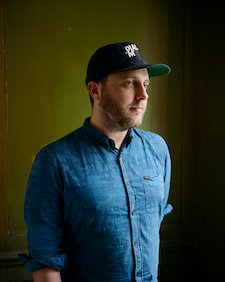
Perspective was another element that we were very aware of. We knew we wanted the film to start from the couple’s viewpoint. But then, as the story develops, it shifts and becomes from Charlotte’s POV. We start to see into the inner workings of her mind, her worries and anxieties. We added some dreamscape imagery of crows to help illustrate her feelings — The Corvid family of birds are often used in art and literature as harbingers of dark omens, mystery, bad luck and death… which is exactly what we wanted.
The tricky thing about making a film is having the conviction to do things that way you want to do them, rather than the way they are “usually” done. My biggest gripe with most films is inauthenticity; failing to set up a real and believable world or characters — people who don’t talk or act like real people would. So I like to work with the actors closely, workshopping the script, rehearsing and fine-tuning the dialogue so every line is justified and comes from an authentic place for the character. We spent two weeks doing this, and Jason would sit in and help me make notes. We’d then re-write the script overnight and come in the next day and do it all again. An added bonus to working this way is that when you’re shooting, you don’t have to stop all the time to talk to the cast about motivation — they are invested in their character and know it through-and-through.
I’m keen on trying to illustrate and heighten the themes of the film within every element of the film. We worked hard to create a color palette for every room, prop and costume. This meant that Margaret and Thomas’ clothes could match the walls of the house. Charlotte wears clashing colors until she comes into the house, when she too starts to wear the same colors as the others. But, as her rebellious spirit starts to come through, she starts to wear brighter, braver colors once more. We did something similar with the camera.
I was also keen to have a different look and feel inside the house, and outside the house, so we used a completely different aesthetic in the two areas.
Outside we shot on Spherical lenses, with a handheld camera (with an aspect ratio cropped to 2.35:1). Inside we shot on vintage Anamorphic lenses, with the camera always either “locked-off” or on a dolly.
The idea is that spherical lenses give a truer representation of reality, whereas anamorphic lenses distort reality; in short — anamorphic lenses lie. This was in keeping with the outside being a place full of truth for our protagonist, while the inside is a world of deception.
Granted, this might well be me over-thinking things, and sprinkling a light layer of pretentiousness over the project — but the film is littered with elements like this. The audience shouldn’t be aware of it consciously, but I like to think that elements such as these work on viewers subconsciously and raise the production value of the film immeasurably.
Also read: His House Director Remi Weekes on His ‘Good Immigrant’ Horror Story
In that way, I work with the audience in mind. I want to entertain and give people an enjoyable experience. I don’t want to make boring or plain films and would always rather take a few risks and fail than do something dull and risk-free. A part of that was putting as many themes and talking points in the script as we could and — crucially — including an element of ambiguity. For me, ambiguity in cinema is so often misused, and comes across as a cop-out. But when used properly, as I hope we have done, it is very effective in creating talking points for the viewers.
A good friend of mine is an artist called Death Spray Custom, and he likes to say “If you’re making something and people have no opinion — there is no point in doing it at all.” And thankfully it seems, for far, that we have succeeded in making a film with plenty for people to talk about.
Kindred, directed by Joseph Marcantonio, opens in theaters and on demand this Friday.
